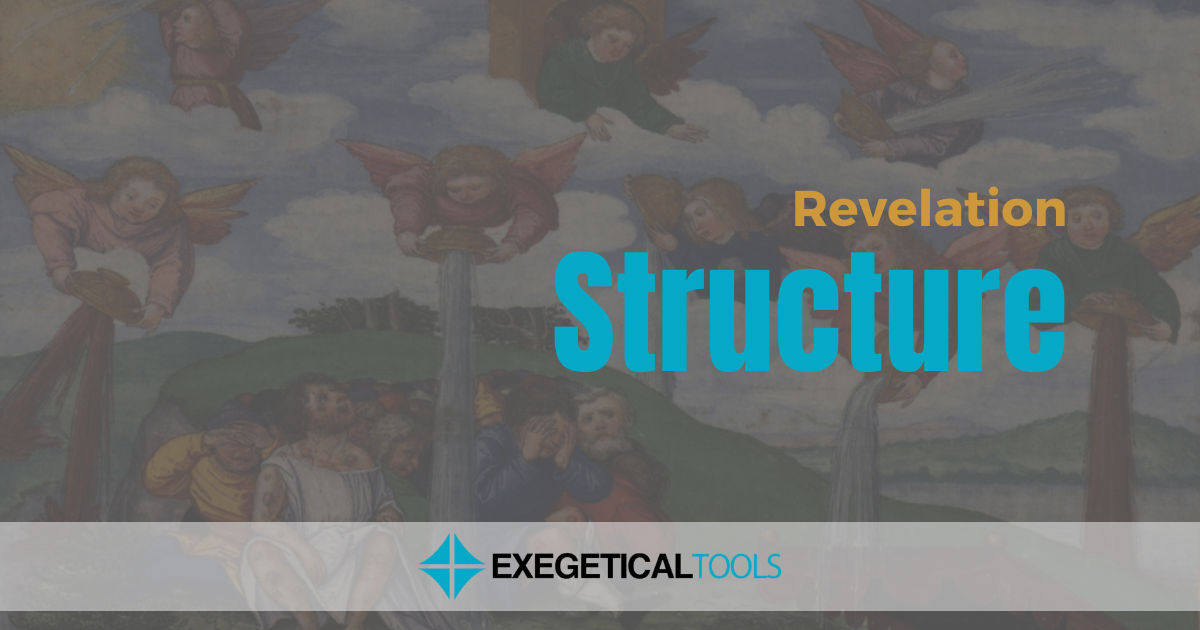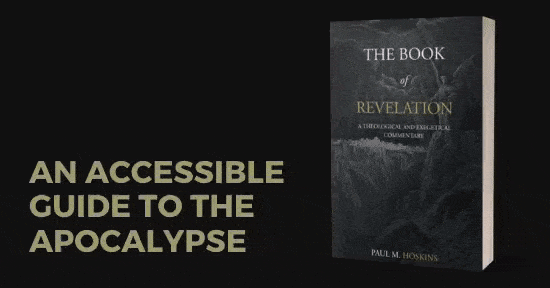
Most would agree that the book of Revelation is a challenging book on many levels. Even an informed reader and student of the book will sometimes find it difficult to discern the function of various passages in the book as a whole. In my commentary, I have tried to help the reader with such matters. I generally provide this kind of guidance in introductory comments on chapters or sections of the book of Revelation. Sometimes, I have dedicated special sections to issues related to structure. In this post, I highlight a few of the structural patterns of the book that may help the reader to navigate through it.
Introduction and the Seven Churches
In Revelation 1-3, some structural elements are straightforward enough. Revelation 1 introduces the book and prepares the way for Revelation 2-3. In the seven letters, interpreters commonly observe seven basic elements.[1] Beyond these observations, the structure of the seven letters as a whole is more puzzling. The Thyatira letter is clearly the central letter of the seven. The second (Smyrna) and sixth (Philadelphia) letters have obvious parallels to one another. These two observations create hints of a chiastic structure for these letters. An odd number, like seven, creates an opportunity for a chiasm with a central element. Is this what is happening in Revelation 2-3?[2]
The Plagues
In Revelation 4-16, the structure of the book appears to revolve around three series of seven plagues, that is, the seals, the trumpets, and the bowls. However, John does not progress straight through these 21 judgments, but he places three interludes in the book. The first interlude follows the sixth seal (Rev. 7). The second interlude follows the sixth trumpet (Rev. 10:1-11:13) and the third interlude (Rev. 12-14) follows the first part of the seventh trumpet (Rev. 11:14-19).[3] The first interlude introduces the sealed people of God (7:1-8) and then launches into a vision of the people of God in the New Jerusalem, before God’s throne (7:9-17). The second and third interludes reveal aspects of the conflict between the two kingdoms, that is, the kingdom of God and the kingdom of the Dragon. The third interlude is very significant for the theology of the entire book.

The seventh seal and seventh trumpet have two functions. First, they introduce the next set of seven plagues. The seventh seal sets in motion the seven trumpets (8:1-2, 6). The seventh trumpet sets in motion the seven bowls (11:19a; 15:5-8). Second, they provide a preview of the final plague, the second coming of the Lord Jesus (8:5; 11:19b). The final plague is fully portrayed in the description of the seventh bowl judgment (16:17-21). By proceeding in this way, John unites the 21 plagues into one series with an interlocking structure.[4] He also makes the seventh plague in each series the final plague. As a result, each series of seven plagues ends at the same place and the reader must ask whether or how much the first six plagues of each series overlap in terms of the time when they are envisioned to occur.
To figure this out, it is important to notice John’s use of fractions in his description of the first four seals (¼) and the first six trumpets (⅓). These fractions indicate the limited nature of these plagues. No fractions occur in his description of the sixth seal, seventh seal, seventh trumpet, or seven bowls.[5] These are the final plagues and they affect the entire earth. They are the ones that overlap in some way and are therefore the most challenging in terms of their timing. It appears likely that the sixth seal describes events that take place after the first six bowls, but before the seventh.[6]

Judgement and Salvation
Revelation 17:1-22:5 does not appear to have such strong structural indicators. It contains alternating visions of judgment for elements of the Dragon’s kingdom and of salvation for the kingdom of God. In this unit, the description of Babylon and her fall is parallel to the description of the New Jerusalem that descends from heaven (Rev. 17:1-19:4; 21:1-22:5).
Revelation 19:11-21 describes the much-anticipated coming of Jesus. After Revelation 17:1-22:5, the book closes with an epilogue (22:6-21) that has parallels to several aspects of Revelation 1:1-8.
Foreshadowing
One other feature of the book of Revelation is important to notice. The book contains several examples of foreshadowing where a verse or passage anticipates a fuller description that will come later in the book. As noted above, the two short descriptions of the seventh plague with the seventh seal and the seventh trumpet anticipate the fuller description that occurs with the seventh bowl.
Another important example is the four previews of the future of the people of God. These come in the form of three visions (7:9-17; 14:1-5; 15:2-4) and one announcement (19:7-8). They provide initial glimpses of the people of the New Jerusalem (Rev. 21-22).
Similarly, previews of the judgment of Babylon and her people occur before Babylon and her destruction are described in more detail in Revelation 17-18 (Rev. 11:13; 14:6-20; 16:19). These instances of foreshadowing provide good examples of the need to examine each passage of the book carefully in order to see how it contributes to the whole.
The outline below provides an overview of the contents of the book.
Outline of the Book of Revelation
I. Introduction to the book of Revelation (1:1-20)
A) Prologue (1:1-3)
B) Epistolary introduction (1:4-8)
C) Vision of the glorified Jesus and introduction to the 7 letters to the churches (1:9-20)
II. The 7 letters to the 7 churches (2:1-3:22)
A) Ephesus (2:1-7)
B) Smyrna (2:8-11)
C) Pergamum (2:12-17)
D) Thyatira (2:18-29)
C’) Sardis (3:1-6)
B’) Philadelphia (3:7-13)
A’) Laodicea (3:14-22)
III. Vision of God, the Lamb, and the scroll with 7 seals (4:1-5:14)
A) The One who sits on the throne (4:1-11)
B) The Lamb and introduction of the scroll with 7 seals (5:1-14)
IV. Opening of the 6 seals (6:1-17)
V. Interlude 1: The sealing of the people of God and a vision of the people of the New Jerusalem (7:1-17)
A) Sealing of the people of God, the 144,000 (7:1-8)
B) Vision of the people of the New Jerusalem (7:9-17)
VI. The 7th seal and the first 6 trumpets (8:1-9:21)
A) The 7th seal (8:1-5)
1) The introduction of the 7 trumpets (8:2)
2) The 7th judgment (8:3-5)
B) The first 6 trumpets (8:6-9:21)
VII. Interlude 2: John’s call to prophesy and the 2 prophetic witnesses (10:1-11:13)
A) John called to prophesy “again” (10:1-11)
B) The story of the 2 prophetic witnesses (11:1-13)
VIII. The 7th trumpet, part 1 (11:14-19)
XI. Interlude 3: The unholy trinity, the 144,000 on Mount Zion, and the coming judgment (12:1-14:20)
A) The unholy trinity: the Dragon, the Beast, and the False Prophet (12:1-13:18)
B) Preview of the coming of judgment and salvation (14:1-20)
1) The victorious people of the Lamb on Mount Zion (14:1-5)
2) Judgment for Babylon and the people of the Beast (14:6-11)
3) Salvation for the people of the Lamb (14:12-16)
4) The coming wrath of God (14:17-20)
X. The 7th trumpet and the 7 bowls (15:1-16:21)
A) The 7th trumpet, part 2
1) The angels with 7 bowls (15:1, 5-8)
2) Vision of the victorious people of the Lamb (15:2-4)
B) The judgments of the 7 bowls (16:1-21)
XI. Babylon the Harlot and her judgment (17:1-19:4)
A) Portrait of the Harlot (17:1-6)
B) Interpretation of the Beast’s 7 heads and 10 horns (17:7-18)
C) Extended portrait of the Harlot’s destruction (18:1-19:4)
XII. The coming of the Lamb for judgment and salvation (19:5-21)
A) The introduction of the bride of the Lamb (19:5-10)
B) The Christ comes to judge the Beast and his armies (19:11-19)
C) The judgment of the Beast and the False Prophet (19:20)
D) The judgment of the Beast’s armies (19:21)
XIII. The millennium and the final judgment of the people of the Devil’s kingdom (20:1-15)
A) The millennium (20:1-10)
1) The binding of the Devil for 1,000 years (20:1-3)
2) The reign of the saints (20:4-6)
3) The release and final defeat of Satan (20:7-10)
B) The final judgment of the people of the Devil and the lake of fire (20:11-15)
XIV. The New Jerusalem (21:1-22:5)
A) Introduction to the New Jerusalem of the new creation (21:1-8)
B) Description of the New Jerusalem (21:9-22:5)
XV. Epilogue (22:6-21)
This post is adapted with permission from Paul M. Hoskins, The Book of Revelation: A Theological and Exegetical Commentary (2017).
Notes
[1] See the section on the structure of the seven letters in the introduction to Rev. 2-3.
[2] See the excursus on the chiastic structure of the seven letters (in chapter 3).
[3] With respect to the three interludes, see Osborne, Revelation, 29-30. Osborne has undoubtedly influenced my ideas about structure, since my first struggles with the structure of the book occurred while taking a class with him.
[4] See the similar claims made by Beale (Revelation, 112, 113-14).
[5] See the fractions in Rev. 6:8 (“one quarter of the earth”) and in 8:7 (“third of the earth”). On the use of fractions with the plagues, see Bauckham, Climax of Prophecy, 259 and Theology of Revelation, 82-83.
[6] See comments on Rev. 6:12-17.

